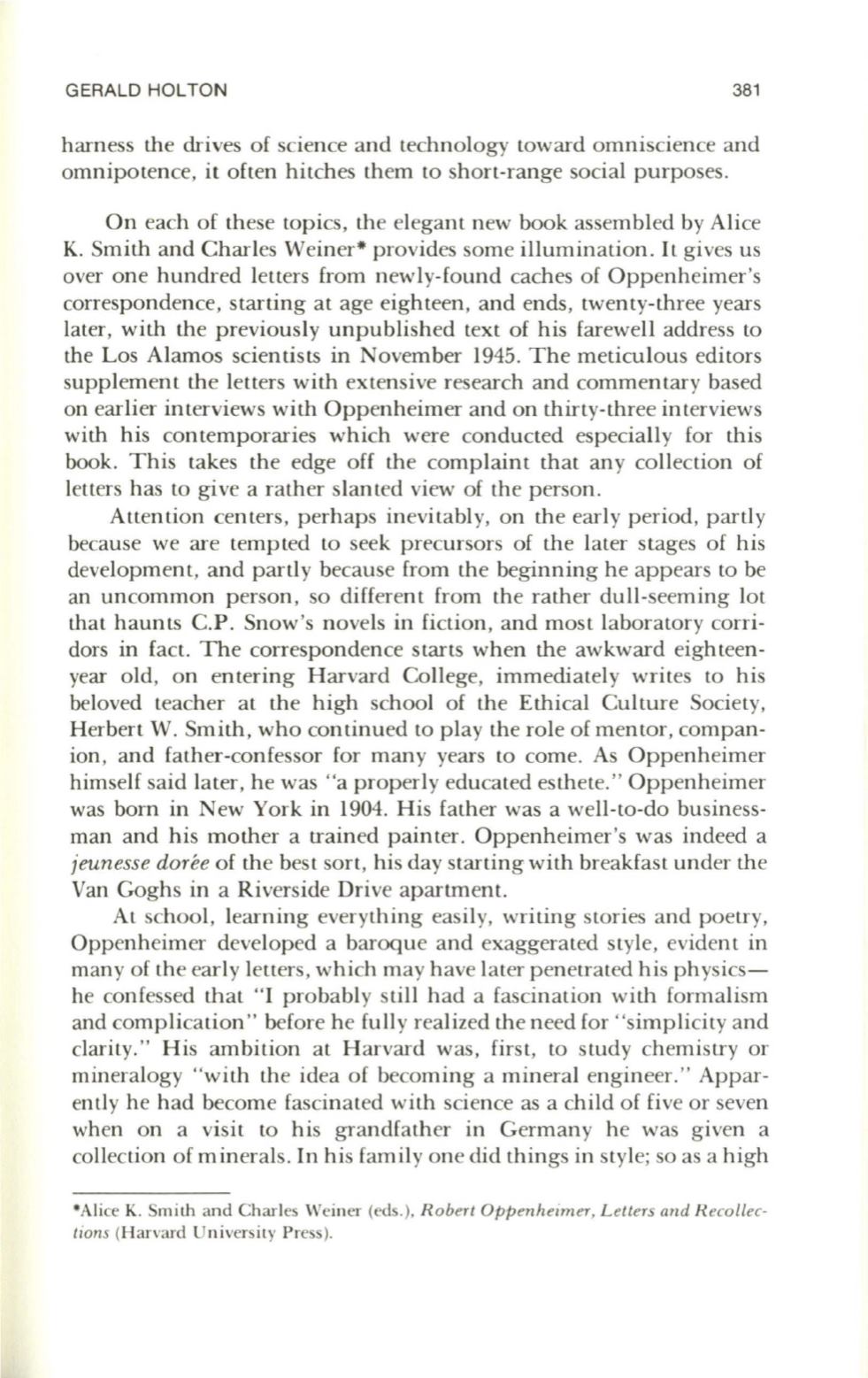
GERALD HOLTON
381
harness the drives of science and technology toward omniscience and
omnipotence, it often hitches them
to
short-range social purposes.
On each of these topics, the elegant new book assembled by Alice
K. Smith and Charles Weiner· provides some illumination .
It
gives us
over one hundred letters from newly-found caches of Oppenheimer's
correspondence, starting at age eighteen, and ends, twenty-three years
later, with the previously unpublished text of his farewell address to
the Los Alamos scientists in November 1945. The meticulous editors
supplement the letters with extensive research and commentary based
on earlier interviews with Oppenheimer and on thirty-three interviews
with his contemporaries which were conducted especially for this
book. This takes the edge off the complaint that any collection of
letters has to give a rather slanted view of the person.
Attention centers, perhaps inevitably, on the early period, partly
because we are tempted to seek precursors of the later stages of his
development, and partly because from the beginning he appears to be
an uncommon person, so different from the rather dull-seeming lot
that haunts c.P. Snow's novels in fiction, and most laboratory corri–
dors in fact. The correspondence starts when the awkward eighteen–
year old, on entering Harvard College, immediately writes to his
beloved teacher at the high school of the Ethical Culture Society,
Herbert W. Smith, who continued to play the role of mentor, compan–
ion, and father-confessor for many years
to
come. As Oppenheimer
himself said later, he was "a proper! y educated es thete. " Oppenheimer
was born in New York in 1904. His father was a well-to-do business–
man and his mother a trained painter. Oppenheimer's was indeed a
jeunesse doree
of the best sort, his day starting with breakfast under the
Van Goghs in a Riverside Drive apartment.
At school, learning everything easily, writing stories and poetry,
Oppenheimer developed a baroque and exaggerated style, evident in
many of the early letters, which may have later penetrated his physics–
he confessed that "I probably still had a fascination with formalism
and complication" before he fully realized the need for "simplicity and
clarity." His ambition at Harvard was, first, to study chemistry or
mineralogy "with the idea of becoming a mineral engineer. " Appar–
ently he had become fascinated with science as a child of five or seven
when on a visit to his grandfather in Germany he was given a
collection of minerals. In his family one did things in style; so as a high
·Alice K. Smith and Charles Weiner (eds.),
Robert Oppenheimer, L etters and R ecollec·
tions
(Harvard University Press).


